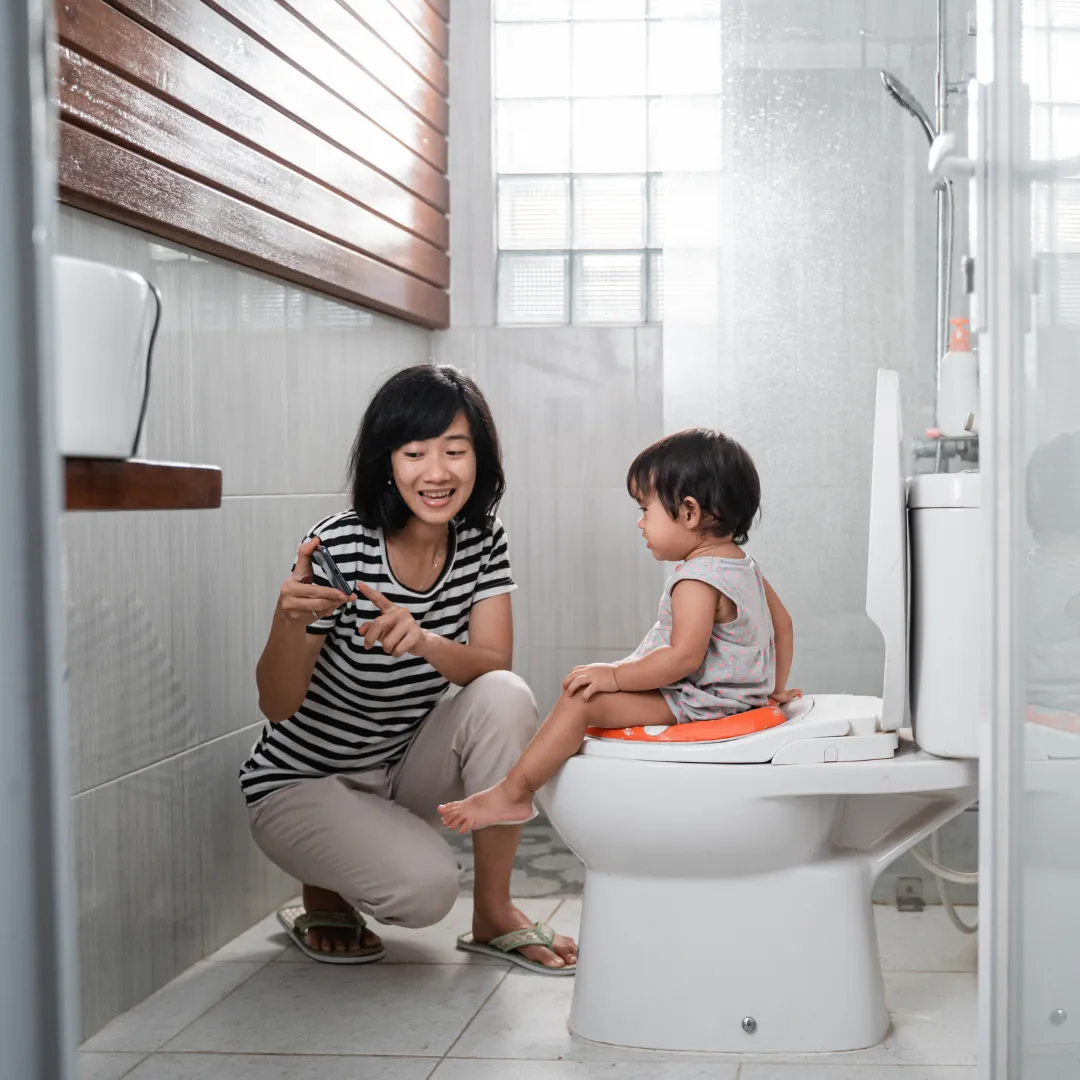ABOUT US
Toilet Training
Support? Yes, Mama!

Toilet Training versus Toilet Learning - What's the Difference?
Carol Segal
August 8, 2022

Toilet Training is defined as the process of teaching a young child to control the bladder and the bowel in order to use the toilet. The Montessori viewpoint is that we do not “teach” what is a natural body process. Instead we observe what the child needs to accomplish, then analyze the best way to offer the necessary assistance to meet that need. Assistance is provided through indirect and direct preparation. The purpose of any assistance given has at its core to be an aid to life.The Montessori perspective is rooted in the knowledge and faith that the child, from conception on, is in a process of self-construction, based upon natural laws of development. We can begin to witness these laws of development by studying the anatomy and function of the body and mind and recognizing cues.
There are basically three aspects of toilet learning. Physiological development: awareness and control of movement, in this case the sphincter muscle; psychological development: child is consciously aware or recognizes physicality; and adult observation: the assistance provided by the adult after observing the child. When the child is given the proper assistance, in what nature intended to be the harmonious development and integration of his physical and psychological being, the function of using the toilet with assistance will take place much earlier than previously expected. This depends upon appropriate cultural influences and upon the adult receiving the necessary information and support. In order to offer the necessary and appropriate assistance, we must take into consideration: how and when the infant communicates his needs, his level of physiological maturation, and how memory develops based on the wiring of the brain and the repetition of experience given to assist this process.
The alimentary canal is the tubular passage between the mouth and the anus. It includes the organs through which food passes for digestion and absorption, from which elimination is expelled as waste. The task of the digestive system is the physical and chemical breakdown of food. The digestive tract includes the mouth (tongue), three pairs of salivary glands, pharynx, esophagus, stomach, pancreas, liver, gallbladder, small intestine, large intestine, rectum, and anus. Following ingestion, the digestive organs process food and fluids so that nutrients can be absorbed from the intestines and circulated throughout the body.
Toilet learning or toileting should assist the child to develop the ability to control the two distinct actions for urination and defecation. Nature intended these functions to operate for the survival of the species. However, for the child to control and coordinate these actions, their awareness of them has to develop concurrently with the maturation of the systems involved. Observation shows that at one month the infant can control his eyes; by two months, his head and neck; by four months, the upper chest, arms and hands; by six months, the trunk and back so that he can begin to sit. Physically, the child who is able to sit without support can control and coordinate his bladder, urethral sphincter and anal sphincter muscles. By eight months, the child uses her knees for crawling; and finally, at approximately one year, the legs for standing. By this time, all the voluntary muscles are functioning and can be directed by the will.
By observing and being aware of the child’s elimination after eating, drinking, and sleeping, the adult is able to assist the child in using the toilet based upon those observations. This is vastly different from training a child to adjust to a prescribed schedule the adult has established for when they think the child needs to eliminate. This is the difference between training and learning. Learning occurs for both the child and the parent, while training is an external set of rules based upon convenience.
STAY CONNECTED





